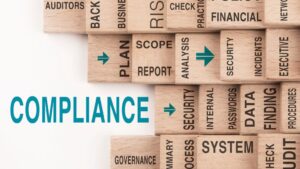The identification of financial crime risks in organizations. Financial crime detection, an ongoing process performed to assess the possibilities of occurrence of financial crime and risk incidents in any particular function or department.
Financial crime risk detection is a process that involves the review of historical financial transactions and other related information to identify the financial crime risk indicators in a particular department or function of the entity. It involves the analysis of various conditions that highlight the breaches of internal controls and any possible management bias for the actual financial crime incident.
Identification of Financial Crime Risks in Organizations
The identification process is a forward-looking activity to assess the possibility of reoccurring financial crime incidents. To assess the reoccurrence of financial crime in the future in any particular department or function of the company, the investigators analyze the historical and current financial crime trends and incidents to establish the inter-connections between them. This connection assessment helps in the prediction of possible future fraud incidents.
To detect crimes such as fraud, all the processes and activities are studied to find the control weaknesses and possible avenues which the employees or other stakeholders exploit. Financial crime detection is an ongoing process that is performed to assess the possibility of the occurrence of fraud in any particular area of the department.
Through a whistle-blower program, the entity demonstrates its commitment to good corporate governance and establishing an anti-financial crime risk management culture that promotes a high degree of ethics and belief in its stated corporate values. The compliance framework and policies highlight the responsibility of the management and employees to report any identified financial crime risk or incident to the senior management of the company or the assigned financial crime management team.
Usually, employees are reluctant to share the information with the management for fear of losing their jobs. Therefore, the senior management should devise a policy where everyone in the organization or company is encouraged to share the information with the senior management without any fear.
The management may establish hotlines to encourage the employees to report fraud risks without fear. Such programs may be developed to encourage reporting financial crime incidents, allow for the appropriate investigation of the reported incidents and protect employees who disclosed the financial crime to the management.
Financial Crime Risk and Incident Database
The management may establish a database to record the details of financial crime risks and incidents, including the progress of their investigations. Such databases must be analyzed and monitored on an ongoing basis, which helps management understand the reasons and causes of financial crime incidents. Therefore, management establishes and implements relevant processes and procedures to prevent similar financial crimes.
The compliance team may be held responsible for periodic review and updating of the database to ensure that it remains current and relevant for future financial crime risk identification and management. The database may be based on different parameters to highlight the criticality of the financial crime risks and incidents.
Final Thoughts
Financial crime legislation has become more risk-focused, requiring organizations to fully understand the risks they face based on their business model and strategy. Regulators are increasingly scrutinizing companies’ financial crime controls. As a result, incorporating financial crime controls into a risk management framework and developing a robust risk assessment tool to go with it has become a top priority.





